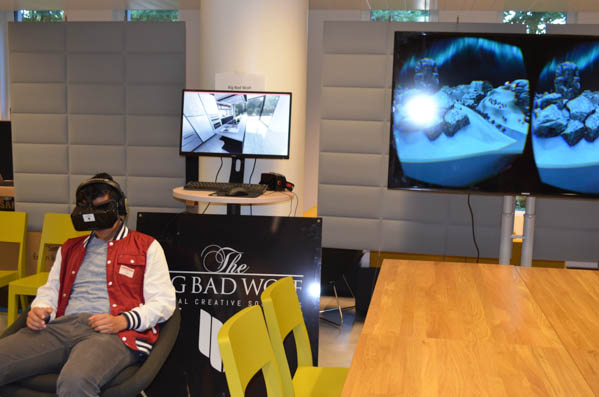Journal of Cybertherapy & Rehabilitation
Spring 2008, Volume 1, Issue 1
EDITORIAL
Welcome to the inaugural issue of the Journal of CyberTherapy and Rehabilitation (JCR), a new peer-reviewed academ- ic journal that explores the uses of advanced technologies for therapy, training, education, prevention, and rehabilita- tion. Published quarterly, JCR is unique among academic journals in that it focuses on the rapidly expanding world- wide trend of moving toward technological applications in healthcare. At JCR, our main areas of interest include, but are not limited to, psychiatry, psychology, physical medicine and rehabilitation, neurology, occupational therapy, physical therapy, cognitive rehabilitation, neurorehabilitation, oncology, obesity, eating disorders, and autism, among many others.
An exciting body of research regarding the utilization of advanced technologies in healthcare has emerged over the past decade, revealing the continuous advances and discoveries made by over 450 investigators to help patients with both mental and physical disorders. Advanced technologies—such as virtual reality (VR), robotics, non-invasive phys- iological monitoring, E-health, and adaptive displays—are now being applied to several areas of healthcare.
This premiere issue of JCR features comprehensive review articles by preeminent scholars in the field. These reviews cover some of the most promising applications for technology in therapy, and rehabilitation, surveying the concepts and studies that laid the groundwork for the field up to this point. It is my hope that this collection of papers will not only act as an introduction for those new to the field, but will also expand the knowledge of those well-established in their careers with newer applications for technology in healthcare. This set of articles is a repository for many of the most vital findings in CyberTherapy and Rehabilitation to date.
The first paper, by Professor Giuseppe Riva from Italy, focuses on using virtual reality (VR) as an embodied technol- ogy for managing body image. Many eating disorders (e.g. Anorexia Nervosa, Bulimia, Binge Eating Disorder) are associated with a distorted body image. Because of its immersive tendencies, VR is an effective tool for altering and adjusting body image in individuals with these disorders. In addition, VR can be used for nutrition education and train- ing for those with obesity.
The second paper, “Virtual Reality for Posttraumatic Stress Disorder and Stress Inoculation Training,” features ways in which VR and other advanced technologies can be used to help prevent and treat stress-related reactions in sol- diers and the civilian population. Traumatic events such as motor vehicle accidents, assault, combat, or other threats to life can sometimes cause symptoms that interfere with daily life. VR exposure therapy has shown promise in alle- viating these symptoms, restoring healthy function to those affected. It has also been shown to help train individuals to deal with stressors prior to exposure.
Next is an article on using video games for therapy and rehabilitation of the elderly by Professor Luciano Gamberini of Italy. This paper offers an overview of recent game-based applications used to improve elderly people’s cognitive abilities and to treat psychological problems accompanying illnesses and social isolation. The authors present several examples of videogames adopted within training programs for elderly people, which have been tested through scien- tific procedures.
Pioggia and colleagues discuss the possible uses of robot-human interactions for the treatment and training of people with Autistic Spectrum Disorders (ASDs) in their article. Since individuals with ASDs have impairments in process- ing of social and emotional information, it has been suggested that robotic dolls, mobile robots and humanoids can act as social mediators to teach those with ASDs social interaction skills. It is proposed that ASD patients are better able to focus on and imitate human behavior with training from a biomimetic android.
Later in the issue Cameirão and colleagues present a review of the use of VR for cognitive neurorehabilitation following stroke. VR has revealed itself to be a beneficial tool in the diagnosis, monitoring, and recovery of motor and cognitive skills. This paper reviews cutting-edge VR applications for restoring function to the upper extremities after stroke.
Our colleagues from Canada, Côté and Bouchard, cover the history of VR use for treatment of specific phobias in their paper. They examine 39 studies on the treatment of specific phobias including acrophobia, aviophobia, claus- trophobia, arachnophobia and fear of driving. In their paper these experts provide a critical analysis of research up to this point, and propose future directions for this original application of VR.
Professor Cristina Botella’s team from Spain examines VR applications for both the treatment of chronic pain and dis- traction from acute pain generated by medical procedures or other stimuli. Many medical procedures produce acute pain, and often medication is not sufficient to counteract the distress patients experience. However, in many cases VR has been found to be an effective distracter from pain during medical treatment. The authors also address the new concept of using these advanced techniques for treating chronic pain.
And finally, Professor Sun I. Kim and fellow researchers from Hanyang University in Seoul, Korea evaluate the use of VR for patients with schizophrenia, a brain disorder that is characterized by disturbances in general cognition, such as abnormal expressions of emotion and ways of thinking, mental derangement, regression from reality, strange lan- guage or behavior, and delusion or illusion. Because VR is a medium that can present social and emotional situations via realistic human-computer interactions, it can be used for traditional forms of therapy, with the added advantage of being able to provide objective measurements.
The second issue of JCR will continue to explore the ways in which technology influences and enhances the health- care of citizens in Europe and throughout the world. We are interested in receiving original research and ideas for future theme issues from our readership. Current topics being considered include technology for the elderly, for those with disabilities, and other specialized populations. Please contact us with your interesting manuscripts and ideas for additional topics for the Journal. Thank you for your support of this promising new publication.
Brenda K. Wiederhold, Ph.D., MBA, BCIA
Editor-in-Chief, Journal of CyberTherapy & Rehabilitation
Virtual Reality Medical Institute
Brussels, Belgium



